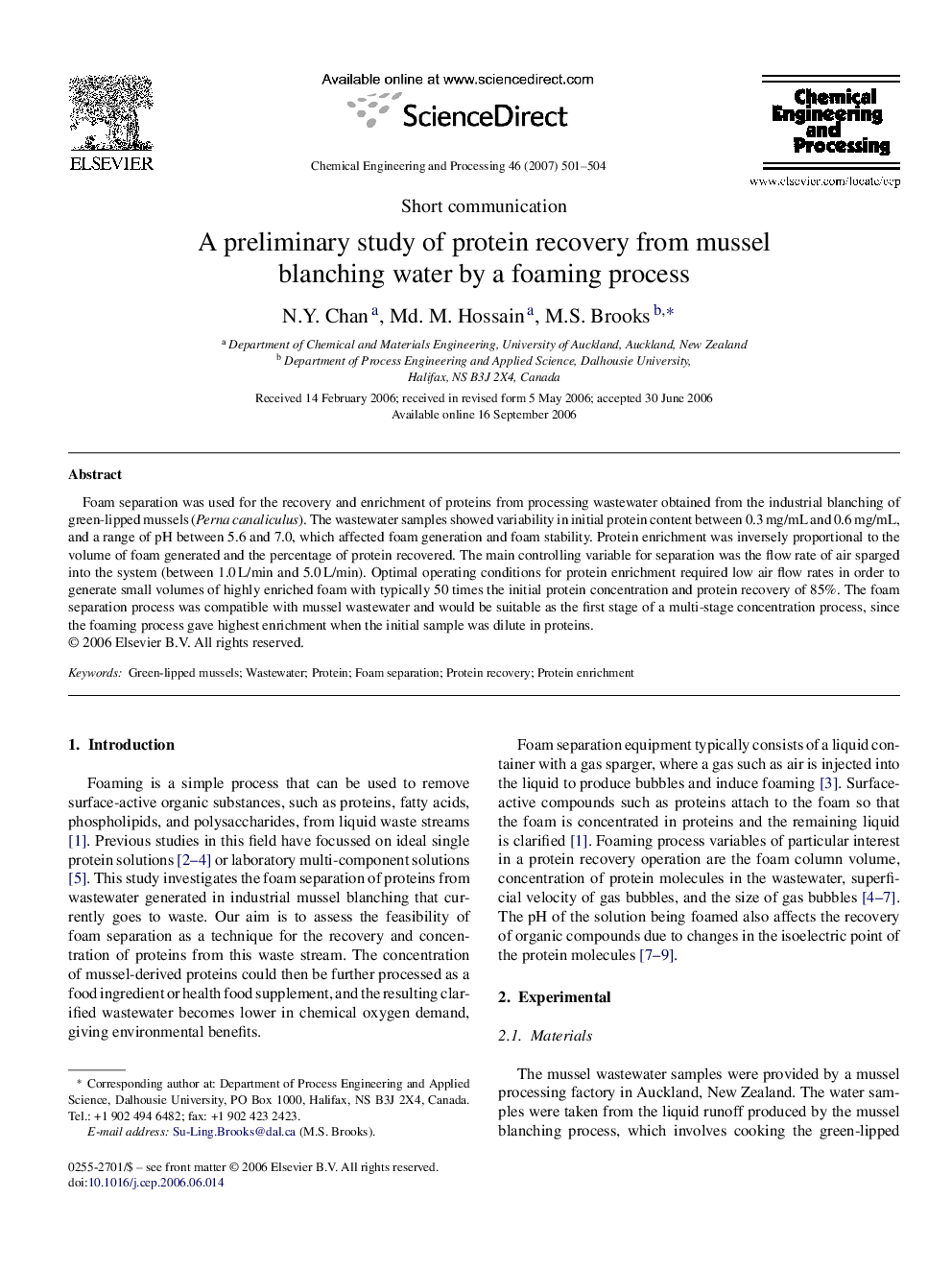| Article ID | Journal | Published Year | Pages | File Type |
|---|---|---|---|---|
| 688328 | Chemical Engineering and Processing: Process Intensification | 2007 | 4 Pages |
Foam separation was used for the recovery and enrichment of proteins from processing wastewater obtained from the industrial blanching of green-lipped mussels (Perna canaliculus). The wastewater samples showed variability in initial protein content between 0.3 mg/mL and 0.6 mg/mL, and a range of pH between 5.6 and 7.0, which affected foam generation and foam stability. Protein enrichment was inversely proportional to the volume of foam generated and the percentage of protein recovered. The main controlling variable for separation was the flow rate of air sparged into the system (between 1.0 L/min and 5.0 L/min). Optimal operating conditions for protein enrichment required low air flow rates in order to generate small volumes of highly enriched foam with typically 50 times the initial protein concentration and protein recovery of 85%. The foam separation process was compatible with mussel wastewater and would be suitable as the first stage of a multi-stage concentration process, since the foaming process gave highest enrichment when the initial sample was dilute in proteins.
